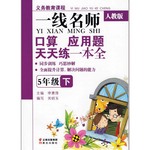题目内容
阅读下面材料,在空白处填入适当内容(1个单词)或括号内单词的适当形式(不超过3个单词)。
This is a true story which happened in the States. 1. man came out of his home to admire his new truck. To his puzzlement, his three-year-old son was 2. (happy) hammering dents(凹痕) into the shiny paint of the truck. The man ran to his son, knocked him away, hammered the little boy's hands into pulp(果浆汁) as 3. (punish). When the father calmed down, he rushed his son to the hospital.
Although the doctor tried desperately to save the crushed bones, he finally had to cut the fingers from both the boy's hands. When the boy 4. (wake) up from the operation and saw his bandaged stubs, he innocently said, “Daddy, I'm sorry about your truck, 5. when are my fingers going to grow back?”
The father went home and committed suicide.
Think about this story the next time someone steps on your 6. (foot) or you wish to take revenge(报复). Think first 7. you lose your patience with someone you love. Trucks can be repaired, but 8. (break) bones and hurt feelings often can't. Too often we fail to recognize the difference between the person and the performance. We forget that forgiveness is 9. (great) than revenge.
People make mistakes. We 10. (allow) to make mistakes. But the actions we take while in a rage will impress us forever.
 新课标同步训练系列答案
新课标同步训练系列答案 一线名师口算应用题天天练一本全系列答案
一线名师口算应用题天天练一本全系列答案
